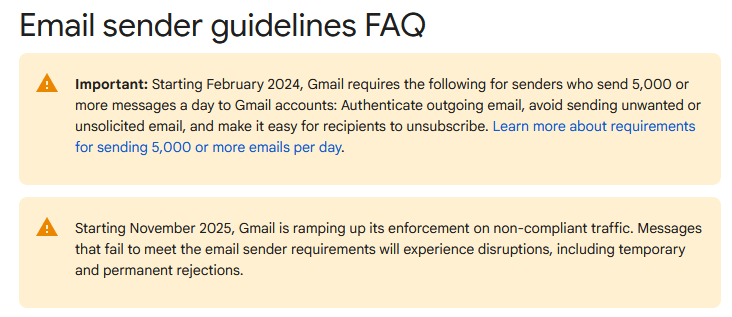Gmail has officially circled November 2025 on its calendar, and email senders should too. After easing into enforcement since February 2024, Google is turning up the heat on non-compliant mail. Think of this as the final boarding call for anyone who has been cruising along without proper authentication.
Google’s message is crystal clear: authenticate properly, respect standards, or expect delivery problems. That means SPF or DKIM is not optional, and DMARC with a policy is now table stakes. If you have been dragging your feet, this is not the time to play email roulette.

What does this enforcement look like? Temporary throttling, delayed delivery, and yes, permanent rejections if issues continue. And to make sure no one can claim ignorance, Gmail has also refreshed its bounce messaging to be blunt and direct.
A few gems to keep an eye out for in your bounce processing:
421 | 4.7.26
This email has been rate limited because it is unauthenticated… SPF or DKIM required.
421 | 4.7.40
Rate limited because there is no DMARC policy…
Could Google make it any clearer? If your authentication fails or your DMARC policy is missing your messages may not make it through. These are not soft nudges anymore. They are neon-lit reminders that the inbox has rules, and Gmail expects senders to follow them.
Brands that embraced best practices early can take a deep breath. If you already enforce DMARC, use aligned authentication, and maintain list hygiene, this news feels more like another friendly checkpoint than a cliff. But if your email compliance plan involves “we’ll get to it eventually,” the clock is ticking.
Curious about the full history of these updates? Here is the original context from 2023 and the 2024 rollout. The updated bounce guide is also worth bookmarking.
Now is a great time to audit your setup, tune up your alignment, and confirm your authentication is working as expected. Your future inbox placement depends on it.


